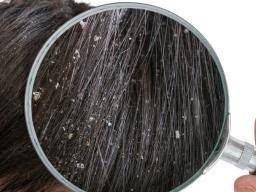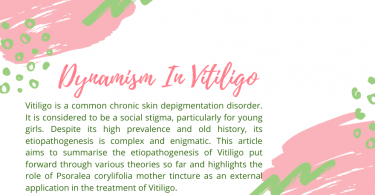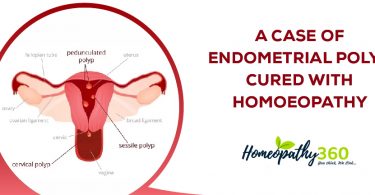ABSTRACT
Success of selection of right remedy depends on converting the symptoms into correct rubrics and identifying correct simillimum through rubrics. When cases don’t have general symptoms and full of pathognomonic symptoms , considering the diagnostic rubrics for selection of remedy will helpful. Kent Repertory is based on philosophy of General to Particular . Kent opposed the prescription based on the diagnostic rubrics. This study helps you to know all diagnostic rubrics in Kent Repertory. The purpose of this study is the to know the diagnostic rubrics in all chapters of Kent Repertory.
Key words : Kent Repertory , Diagnostic rubrics, Generals, Pathognomonic symptoms.
INTRODUCTION
Many stalwarts contributed to the development of Homoeopathy , one among them and most popular is. Dr. J T Kent . His contributions to Homoeopathy is milestones in the field of Homoeopathy. Dr. Kent’s most famous work is “ Repertory of the Homoeopathic Materia Medica” . The first edition of his Repertory is published in 1897. Later on it underwent many editions and came out as one of the finest work in Homeopathy. It is the most appropriate and most complete Repertory so that many physicians using this till today all around the world. The Indian edition of Kent Repertory is published in the year of 1961.
Before using any Repertory one should understand it’s philosophy . The philosophy of Kent’s Repertory is based on Generals to Particulars . So this Repertory is full of Generals. Even the Kent’s Repertory is full of Generals , it contains rubrics related to diseases ( Diagnostic rubrics). The rubrics which represents some diseases is called Diagnostic rubrics, example : Cancer , Goitre, Hemorrhoids etc. Kent’s disagreed to prescription based on diagnostic rubrics. Still Kent mentioned the diagnostic rubrics in many chapters of his Repertory.
These diagnostic rubrics helps to select most appropriate remedy in cases where lack of Generals and also in one sided diseases. These rubrics very useful in acute diseases by which acute and right Remedy can able to select. Cases where deep pathology is located and in incurable cases , we can select palliative remedy by referring these diagnostic rubrics.
DIAGNOSTIC RUBRICS
There are 37 chapters in Kent Repertory ,starts with mind and ends with Generalities. In the following chapters , following diagnostic rubrics are given.
MIND
Delirium , Insanity , Mania , Somnambulism
VERTIGO
Diplopia
HEAD
Cephahaematoma , cerebral haemorrhage, Dandruff, Exostoses, Hydrocephalus, lump, Lupus.
EYES
Astigmatism, Cancer, Cataract , Chemosis , Condylomata, Detachment of Retina , Ecchymosis , Exopthalmus , Glaucoma , Melanosis , Nystagmus, Strabismus , Styes.
VISION
Diplopia , Hemiopia , Hypermetropia ,Loss of vision ( Blindness) , Myopia , Muscae Volitants , Triplopia.
EAR
Exostosis, Steatoma behind ears , wax.
NOSE
Anosmia , cancer , catarrah, Comedones, Coryza , Diphtheria, Lipoma , Polypus , Warts .
FACE
Anaemic , Cancer , Carbuncles , Eruptions: -acne – eczema – urticaria – Comedones – herpes – pimples, Erysipelas , Exostosis , Jaundice.
MOUTH
Aphthae , Cancer – palate, Epulis , Fistula-gums, purpura , Ranula , Varicose veins -tongue , warts .
TEETH
———–
THROAT
Cancerous, Diphtheria ( see membrane ) , Fissured – pharynx, Gangrene , Paralysis, Varicosis.
EXTERNAL THROAT
Fistulae , Goitre , Paralysis , Torticollis , Tumors , warts.
STOMACH
Cancer, Epileptic aura , Gangrene , Heartburn, Shock.
ABDOMEN
Aneurism, Ascites ( see dropsy ) , Cirrhosis – liver , Fistulae – inguinal glands , Gangrene , Hernia – Femoral , Intussusception , Jaundice ( see skin ) , Paralysis of intestine, Perforation – region of naval , Tuberculosis ( see Tabes ) ,
RECTUM
Cancer , Cholera , Constipation , Diarrhoea, Dysentery, Fissure, Fistula, Hemorrhoids, Paralysis ,. Warts ( Condylomata) .
STOOL
———–
BLADDER
Calculi , Gangrene , Paralysis , Tenesmus, Tumors .
KIDNEY
Addison’s disease , Calculi ( see urine sediment ) .
PROSTATE GLAND
————
URETHRA
Chordee , Gonorrhoea – suppressed , Tumor.
URINE
———
GENITALIA
Blennorrhoea , Cancer , Condylomata , Elephantiasis scrotum, Empyocele , Fistulous opening – scrotum , Gangrene , Haematocele , Hydrocele , Phimosis , Sarcocele , Tumor – indolent testes.
GENITALIA – FEMALE
Abortion , Cancer of ovaries, Condylomata , Cysts: – ovaries – vagina , fistula-vagina , Gangrene , Leucorrhoea, Lochia , Menopause , Metrorrhagia , Moles , Physometra ( see flatus ) , Placenta retained, Polypus – uterus , Prolapsus – uterus , Serous cysts – vagina, Sterility, Subinvolution, Tumors , Vaginismus , warts ( see Condylomata ) .
LARYNX AND TRACHEA
Cancer , Catarrh, Condylomata , Fissure – larynx , Phthisis .
RESPIRATION
Asphyxia , Asthmatic , Snoring.
Cough
Asthmatic, , Pleurisy .
EXPECTATION
———-
CHEST
Abscess , Aneurism- of the heart , Angina pectoris, Cancer: – Axilla -Clavicle – Mammae – Sternum, Catarrh, Emphysema , Empyema , Erysipelas of Mammae , Exostoses, Fistulous opening in Mammae , Galactorrhoea , Gangrene of lungs , Hydrothorax , Hypertrophy of heart, Paralysis : – diaphragm – heart – lung , Phthis pulmonalis , Purpura , Stenocardia , Tumors – mammae, Warts – sternum .
BACK
Abscess – cervical – lumbar , Bifida , Ecchymosis – lumbar region, Emprosthotonos , Erysipelas , Exostoses , Fistulae , Hyperaesthesia – skin , Opisthotonos , Paralysis- muscles of back , Polypus , Tumors – Sarcoma , warts .
EXTREMITIES
Abscess -joints, Anachylosis – elbow , Anthrax , Arthritic nodosities , Ataxia , Bunions – foot , Chorea , Corns , Dropsy ( swelling ) , Erysipelas , Exostoses, felon ( onychia paronychia ) , Gangrene , Hyperaesthesia, Ingrowing toe nails , locomotor ataxia , Lumps – calf in , Paralysis , Paronychia, Thrombosis – lower limbs , Tumors – shoulder – elbow – wrist – hand , Varices , warts .
SLEEP
———-
CHILL
————
FEVER
Septic fever , Yellow fever , Zymotic fever .
PERSPIRATION
___________
SKIN
Ecchymosis
Eruptions : boils , Carbuncle, chicken-pox, eczema , Leprosy, measles, pemphigus , pimples, psoriasis, roseola , scabies, scarlantina , small pox , urticaria.
Erysipelas , Gangrene , Ichthyosis, Jaundice ( see yellow ) , moles , Purpura haemorrhagica, ulcers- cancerous , warts .
GENERALITIES
Abscesses , Anaemia , Apoplexy, Cancerous affections , Chorea , Dwarfishness , Gangrene ( see inflammation , Blackness ) , Gonorrhoea- suppressed , Leukaemia, Obesity, Scurvy , Septicemia, Syphilis , Thrombosis , Tumors – cystic , varicose veins.
CONCLUSION
Kent mentioned the many diagnostic rubrics in his Repertory. Still some important diagnostic rubrics not mentioned. This limitation is corrected by the modern Repertory like Homoeopathic medical repertory by Robin Murphy etc. Kent gave prime importance to Generals but never neglected the diagnostic rubrics. Diagnostic rubrics which is also very helpful in the selection of Remedy in many cases . It’s left to physician to utilise all these rubrics carefully. All these rubrics useful in the study of remedies under different diseases. It’s a gentle decision to consider these rubrics for the selection of remedy when the cases came with lack of Generals and characteristic Particulars.
Reference :
1. Kent .J.T. Repertory of the Homoeopathic materia medica. Enriched indian edition. B. Jain publishers (p)ltd New Delhi. 2018. 1-1422.
2. Dr. Tiwari Shashi kanth . Essentials of repertorization. Fifth edition.B.Jain Publishers(P)Ltd New Delhi.2016. 259-266.
By
Dr. Ningappa Otti
MD part 2 ( 2018-19 batch )
Department of Repertory
Government Homeopathic medical college and Hospital , Bengaluru – 560079
Phone : 7259268860
Email : [email protected]





